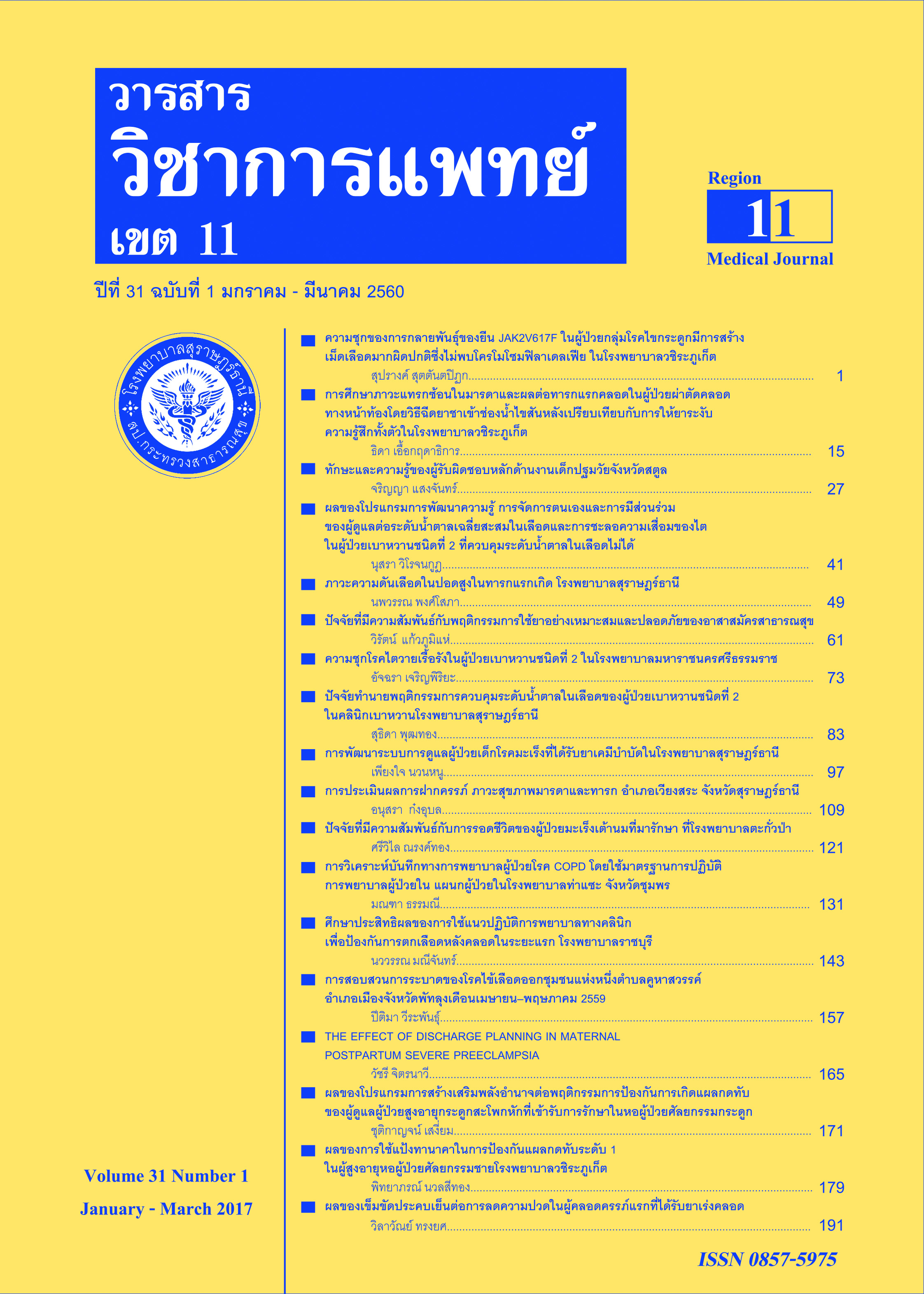Effects of a Knowledge Development self management and Participation of Care Giver Program on Level of Fasting Plasma Glucose and Delayed Progression of Diabetic Nephropathy in Patients with Uncontrolled Type 2 Diabetes Mellitus
Keywords:
participation of care giver, elayed progression of diabetic nephropathy, person with type 2 diabetesAbstract
This pre-experimental study aimed to study of the effect of the knowledge development program to manage on their own and with the participation of care giver, the average level of fasting plasma glucose and delayed progression of diabetic nephropathy. In patients with uncontrolled type 2 diabetes. Select a sample of a specific diabetic patients with kidney aging, the third stageand fourth stage(kidney filtration rate < 60 ml/min) 30 case and care giver 30 case.The sample was received the knowledge development program to manage on their own and with the participation of care giver the number of 12 weeks data collection using data, level of fasting plasma glucose and chronic kidney disease (CKD-EPI). Data analysis with statistical percentage, mean standard deviation and dependent t-test.
The study found that:
1. after the program to manage on their own and with the participation of care giver ended, the average of the self management behavioral and delayed progression of diabetic nephropathy of patients with uncontrolled type 2 diabetes was statistical significantly higher than average of the self management
behavioral and delayed progression of diabetic nephropathy of patients with uncontrolled type 2 diabetes before participating in the program (p <.01).
2. after the program to manage on their own and with the participation of care giver ended, the average of fasting plasma glucose of patients with uncontrolled type 2 diabetes was statistical significantly lower than average of fasting plasma glucose of patients with uncontrolled type 2 diabetes before participating in the program (p <.01). The average of chronic kidney disease (CKD-EPI) of patients with uncontrolled type 2 diabetes was statistical
significantly higher than average of chronic kidney disease (CKD-EPI) of patients with uncontrolled type 2 diabetes before participating in the program (p <.05).
References
2. สำนักงานหลักประกันสุขภาพแห่งชาติ. การบริหารงบควบคุมป้องกันและรักษาโรคเรื้อรัง (บริการควบคุมป้องกันและรักษาผู้ป่วยโรคเบาหวานและความดันโลหิตสูง).พิมพ์ครั้งที่ 1 บริษัท ธนาเพรส จำกัด.2558.
3. สำนักนโยบายและยุทธศาสตร์ สำนักงานปลัดกระทรวงสาธารณสุข.จำนวนและอัตราผู้ป่วยในด้วยโรคเบาหวาน (E10-E14) ต่อประชากร 100,000 คน (รวมทุกการวินิจฉัยโรค) ปี พ.ศ.2550 – 2557 จำแนกรายจังหวัด เขตบริการสาธารณสุข และภาพรวมประเทศ (รวมกรุงเทพมหานคร). 2559.
4. International Diabetes Federation. BLUE CIRCLE TEST.[ออนไลน์].เข้าถึงได้จาก http://www.idf.org/worlddiabetesday/bluecircletest; 2015.[สืบค้นเมื่อ 2 มิถุนายน 2559]
5. รัชมนภรณ์ เจริญ, น้ำอ้อย ภักดีวงศ์, อำภาพร นามวงศ์พรหม. ผลของโปรแกรมการพัฒนาความรู้ และการมีส่วนร่วมของครอบครัวต่อพฤติกรรมสุขภาพและควบคุมน้ำตาลในเลือดของผู้สูงอายุที่เป็นเบาหวานชนิดที่ 2.รามาธิบดีพยาบาลสาร.2553;16(2): 279-292.
6. พิสนธิ์ จงตระกูล. การใช้ยาอย่างสมเหตุสมผลเพื่อการจัดการโรคเบาหวาน ความดันเลือดสูง พิมพ์ครั้งที่ 1:กรุงเทพ;โรงพิมพ์วัฒนาการพิมพ์.2556.
7. สมาคมโรคเบาหวานแห่งประเทศไทย. โรคไตจากเบาหวาน.[ออนไลน์]. เข้าถึงได้จากhttp://www.dmthai.org/news_and_knowledge/1790; 2559.[สืบค้นเมื่อ 2 มิถุนายน 2559]
8. International Diabetes Federation. Diabetes and-Kidney Disease:Time to Act.[ออนไลน์] เข้าถึงได้จาก http://www.idf.org/webdata/docs/Guide_Diabetes_Kidney.pdf; 2003.[สืบค้นเมื่อ 2 มิถุนายน 2559]
9. สำนักเลขาธิการนายกรัฐมนตรี. สธ.เผยโรคไตวายเรื้อรัง เกือบร้อยละ 70 มาจากผู้ป่วยเบาหวาน-ความดันสูง เร่งเปิดคลินิกชะลอไตเสื่อม. [ออนไลน์].2559. เข้าถึงได้จาก http://www.thaigov.go.th/index.php/th/news-ministry/2012-08-15-09-44-34/item/99278-1.html; 2559.[สืบค้นเมื่อ 2 มิถุนายน 2559]
10. สถิติผู้ป่วยโรงพยาบาลเกาะสมุย. รายงานประจำปี 2558, 2558
11. นิษฐา นันทบุตร และคณะ. กรณีศึกษานวัตกรรมการดูแลสุขภาพ(ภาคตะวันออกเฉียงเหนือ) การจัดการโรคเรื้อรังในนนทบุรี: สถาบันวิจัยและพัฒนาระบบสุขภาพชุมชน; 2550.
12. ศิริลักษณ์ ถุงทอง. ผลของโปรแกรมสนับสนุนการจัดการตนเองเพื่อชะลอไตเสื่อมจากเบาหวานต่อพฤติกรรมการจัดการตนเองและผลลัพธ์ทางคลินิกในผู้ป่วยเบาหวานชนิดที่ 2 ที่ไม่สามารถควบคุมระดับน้ำตาลในเลือดได้.ปริญญาพยาบาลศาสตรมหาบัณฑิต(การพยาบาลผู้ใหญ่) บัณฑิตวิทยาลัยมหาวิทยาลัยสงขลานครินทร์.2556.
13. Colin Tidy Diabetes. Education and Self-management Programs. [ออนไลน์] เข้าถึงได้จาก http://patient.info/doctor/diabetes-education-and-selfmanagement-
programmes; 2014.[สืบค้นเมื่อ 2 มิถุนายน 2559]
14. ศิรยุสม์ วรามิตร. โรคไตเรื้อรังในกลุ่มผู้ป่วยเบาหวานและความดันโลหิตสูง. เอกสารประกอบการบรรยาย. [ออนไลน์]. เข้าถึงได้จาก http:// www.sknhospital.go.th/Webskn/news.../โรคไตเรื้อรังในกลุ่มผู้ป่วยเบาหวาน. ppt.2559. [สืบค้นเมื่อ 2 มิถุนายน 2559]
15. วรางคณา พิชัยวงศ์. โรคไตจากเบาหวาน. วารสารกรมการแพทย์. 2558; กันยายน-ตุลาคม: 19-24.
16. จินตนา หามาลี นัยนา พิพัฒน์วณิชชา รวีวรรณ เผ่ากัณหา. ผลของโปรแกรมการส่งเสริมการรับรู้ตามแบบแผน ความเชื่อด้านสุขภาพต่อพฤติกรรมการชะลอความก้าวหน้าของโรคไตเรื้อรังในผู้สูงอายุโรคเบาหวานชนิด ที่ 2 ที่มีภาวะเสี่ยงต่อการเกิดโรคไตเรื้อรัง. วารสารพยาบาลสงขลานครินทร์. 2557; 34(2): 67-86.






